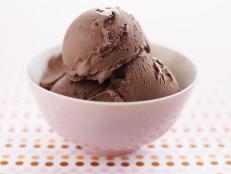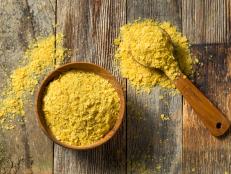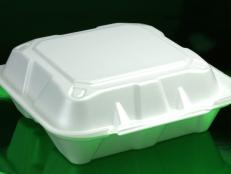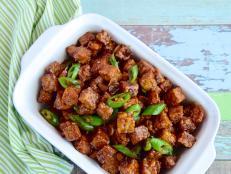What Are Lectins In Food?
And do we need to be concerned about eating them?
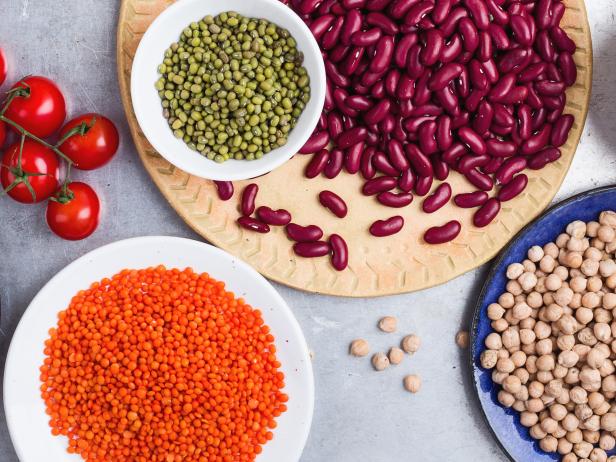
istetiana/Getty Images
By Amy Gorin, MS, RDN for Food Network Kitchen.
Amy Gorin, MS, RDN, is a registered dietitian nutritionist and owner of Master the Media in Stamford, CT.
Maybe you’ve read about “lectins” and are wondering whether they’re actually bad for you – and if you should avoid lectin-rich foods. Well, let’s go ahead and clear up that confusion.
Lectins are proteins that bind to carbohydrates, according to the Harvard T.H. Chan School of Public Health. “They’re naturally occurring compounds found in both plants and animals—but receive the most attention when it comes to plant foods due to their higher concentration in those foods,” says Sharon Puello, MA, RD, CDCES, owner of Fresh Nutrition. Certain foods, such as raw beans, contain larger amounts of lectins.
Lectins have been made famous by Steven Gundry’s The Plant Paradox, which promotes a lectin-free diet. However, the fact remains that research on the topic is limited—and foods that contain high amounts of lectins, such as beans, are not eaten raw.
Lectins are part of a larger category of nutrients called anti-nutrients. “These compounds work to help protect plants from consumption by having undesirable effects on those who consume them,” says Puello. These include symptoms such as bloating and nausea—largely because the human gut is not able to break down lectins.
You might hear that lectins should be avoided, but that’s not necessarily the case. “Because lectins in their raw state at very high levels of intake could cause negative health effects, some people believe that lectins in foods are harmful or bad for us,” says Jen Bruning, MS, RDN, a spokesperson for the Academy of Nutrition and Dietetics. “However, the truth is that many high-lectin foods are also very healthy.” Plus, many foods that contain high levels of lectins—such as beans and whole grains—are almost always consumed cooked. “This greatly reduces the amount of lectins present in the food,” she adds.
What to Know About Soy Lectins
Because soybeans are a legume, they’re considered a high source of lectins, notes says Jen Scheinman, MS, RDN, a registered dietitian nutritionist. But that changes once they’re cooked or fermented. “Fermented soybean products like soy sauce, tamari, miso and natto have very little lectin content,” she says. “As with other beans and legumes, soaking, sprouting and cooking greatly reduce the lectin content of soybeans.”
Whether or not a person is sensitive to lectin-rich foods is very individualistic. If you’re concerned that you’re sensitive, you can work with a registered dietitian nutritionist to create a nutrition plan—find one at eatright.org. “For most people, plant foods that contain lectins are healthy foods to include in your diet,” says Bruning.
How Do Lectins Impact Health?
Lectins can be good for your health—after all, they’re largely found in plant foods, which provide many incredible nutritional benefits. “As with anything, moderation is key,” says Puello.
The proteins also play important roles in immunity and the body’s response to infections, as well as in general cell functioning, adds Puello. “Some research shows that lectins may have potential as a treatment for depression and anxiety in the future,” she notes.
The potential benefits of lectins don’t stop there. “Research suggests that lectins may have potent anti-cancer, antimicrobial and antiviral effects,” says Scheinman. “They may also act as antioxidants helping to protect cells from free radical damage.”
Now, let’s talk about the negative effects that lectins may have. When lectin-rich foods are eaten in their raw form, they can cause health problems. Kidney beans, in particular, contain a lectin called phytohaemagglutinin. When taken in, this can cause red blood cells to clump together—and also lead to other unpleasant symptoms such as bloating, gas, nausea, vomiting, stomach upset and diarrhea.
As well, lectins are said to bind minerals such as iron, calcium and zinc—increasing risk for deficiencies. Consuming lectins can also potentially lead to inflammation, changes in gut bacteria and the triggering of autoimmune conditions through their ability to remain in the gut for an extended period of time, adds Puello.
Despite these concerns, most people don’t need to monitor the lectin-containing foods they eat. But some people should be watchful of intake. This includes folks who eat large quantities of lectin-rich foods on a regular basis, people who have intestinal or autoimmune problems and people with Mast Cell Activation Syndrome, says Puello.

Janine Lamontagne/Getty Images
Foods High In Lectins
In their raw form, foods that have higher amounts of lectins include:
- Beans
- Chickpeas
- Lentils
- Peanuts
- Peas
- Peppers
- Potatoes
- Soybeans
- Tomatoes
- Wheat
However, all these foods boast beneficial nutrients—fiber, antioxidants, vitamins and minerals—and can be part of a healthy, balanced diet.
The most important thing to know when it comes to beans and legumes: Cook them before you eat them (which you would do anyway!) to drastically reduce their lectin content.
Before you cook raw beans, you should soak them for several hours. “Red kidney beans are a good example,” says Puello. “If consumed uncooked, they are toxic. But once cooked, most people can consume them without problems.” Soak the beans for at least five hours, discard the soaking water, then boil the beans in fresh water for a minimum of half an hour, advises the Food and Drug Administration.
“Studies show a very significant decrease in bean lectins when a cooking temperature of 212 degrees Fahrenheit is reached,” says Puello. She points out that an Instant Pot is one of the best ways to cook beans, as its peak temperature is 239 to 244 degrees Fahrenheit. A slow cooker should not be used to cook raw kidney beans, as it will not get hot enough to destroy the lectins.
Sprouting lectin-rich foods is another way to reduce lectin content, adds Puello. “I generally recommend opting for sprouted grains, legumes, nuts and seeds whenever possible,” she says.
The bottom line? Lectin-containing foods are nutritious and can be eaten in moderation in a balanced, healthy diet. “Most people should not be concerned about lectins, since the verdict is still out on their effect on human health,” says Anya Rosen, MS, RD, CPT, a virtual functional medicine practitioner in New York City.
Related Links:
























